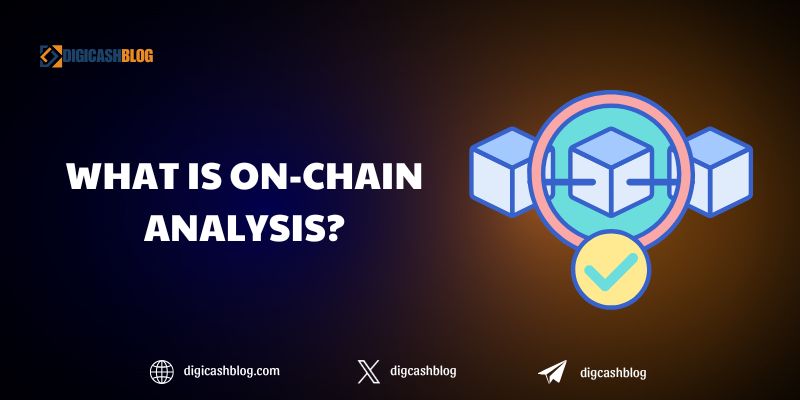What is On-Chain Analysis?
On-chain analysis involves studying data recorded on a blockchain to evaluate the health, adoption, and sentiment surrounding a cryptocurrency. Since blockchains are transparent, immutable ledgers, they provide a wealth of real-time data, including transaction volumes, wallet activity, and smart contract interactions. This data offers a direct view into network activity, unlike off-chain data (e.g., exchange volumes), which can be manipulated.
Key Metrics:
- Transaction Volume: The total value of transactions on the blockchain, indicating network usage.
- Active Addresses: The number of unique wallets interacting with the network, reflecting user adoption.
- Net Exchange Flows: The movement of assets to or from exchanges, signaling buying or selling pressure.
- Hash Rate: For proof-of-work networks like Bitcoin, hash rate measures mining activity, indicating network security and miner confidence.
- HODL Waves: Tracks the age of coins held in wallets, revealing whether investors are accumulating or selling.
- Significance: On-chain analysis provides a fundamental perspective on a cryptocurrency’s intrinsic value and market dynamics, complementing technical indicators like Moving Averages or RSI.

Applications of On-Chain Analysis in Crypto Trading
On-chain analysis in crypto trading offers unique insights into market trends and investor behavior:
Assessing Network Health: High transaction volumes and active addresses suggest strong adoption. For example, a spike in Ethereum’s active addresses during a DeFi boom signals robust network usage, potentially supporting price growth.
Detecting Accumulation or Distribution: HODL Waves and wallet activity reveal whether investors are holding (accumulation) or selling (distribution). If Bitcoin’s HODL Waves show older coins remaining unspent, it indicates long-term confidence.
Exchange Flow Analysis: Large inflows to exchanges often precede selling pressure, while outflows suggest accumulation in private wallets. For instance, significant Bitcoin outflows from Binance in Q1 2025 signaled institutional buying, as noted in X posts.
Whale Tracking: Monitoring large wallet movements (whales) can predict price volatility. A whale transferring $100 million in Solana to a cold wallet may indicate bullish sentiment.
Crypto-Specific Context: The transparency of blockchains like Ethereum and Bitcoin makes on-chain analysis particularly effective for identifying trends driven by fundamentals, unlike speculative pumps in low-liquidity altcoins.
Combining On-Chain Analysis with Technical Indicators
To maximize the effectiveness of on-chain analysis in crypto trading, traders often integrate it with technical indicators:
With Moving Averages (MA): A bullish 50-day SMA crossover combined with rising on-chain transaction volume strengthens the case for an uptrend. For example, if Cardano’s price breaks above its 200-day SMA with increasing active addresses, it confirms bullish momentum.
With RSI: On-chain metrics like net exchange outflows can validate RSI signals. If XRP’s RSI indicates an oversold condition (below 30) and outflows from exchanges increase, it suggests a potential reversal.
With Volume Analysis: On-chain transaction volume can complement exchange volume. A price breakout in Ethereum with both high on-chain and exchange volume is more reliable than one with only exchange volume, which may be inflated by wash trading.
Advanced On-Chain Analysis Strategies
Advanced traders leverage on-chain analysis in crypto trading with sophisticated techniques:
MVRV Ratio: The Market Value to Realized Value (MVRV) ratio compares a cryptocurrency’s market cap to its realized cap (value of coins at their last transaction price). A low MVRV for Bitcoin (e.g., below 1) suggests undervaluation, as seen during early 2025 dips.
Network Value to Transactions (NVT) Ratio: NVT measures a blockchain’s market cap relative to its transaction volume, akin to a price-to-earnings ratio. A high NVT for Ethereum may indicate overvaluation, signaling caution.
Whale Activity Tracking: Tools like Glassnode or IntoTheBlock track whale transactions. For instance, a surge in large Solana transactions (over $1 million) could precede a price rally.
Stablecoin Flow Analysis: Monitoring stablecoin transfers (e.g., USDT, USDC) on-chain can signal market liquidity. A $300 billion daily stablecoin transfer volume in 2025, as projected, indicates robust trading activity.
On-Chain Analysis in 2025 Market Trends
Recent X posts and market data highlight the relevance of on-chain analysis in 2025:
Institutional Accumulation: Bitcoin’s on-chain outflows from exchanges, totaling $1 billion in Q1 2025, reflect institutional accumulation, aligning with ETF inflows from firms like BlackRock.
DeFi and Altcoin Growth: Ethereum’s on-chain metrics, such as 1.2 million daily active addresses, signal strong DeFi adoption, supporting altcoin rallies in tokens like Aave and Uniswap.
Regulatory Impact: On-chain data reveals how regulatory clarity, such as the U.S. repealing the IRS’s DeFi broker rule, has boosted stablecoin and DeFi activity, as discussed on X.

Challenges and Limitations
Despite its power, on-chain analysis in crypto trading has limitations:
Data Complexity: Interpreting metrics like HODL Waves or MVRV requires expertise, and misinterpretation can lead to poor decisions.
Privacy Blockchains: Coins like Monero or Zcash obscure on-chain data, limiting analysis applicability.
External Influences: News, such as U.S. tariffs impacting Bitcoin’s price in Q1 2025, can override on-chain signals, requiring traders to consider off-chain factors.
On-chain analysis in crypto trading provides a fundamental lens into market dynamics, offering insights into network health, investor behavior, and sentiment that complement technical analysis. In 2025, with institutional adoption, DeFi growth, and stablecoin dominance shaping the $2.66 trillion crypto market, on-chain metrics like transaction volume and exchange flows are critical for predicting trends.
